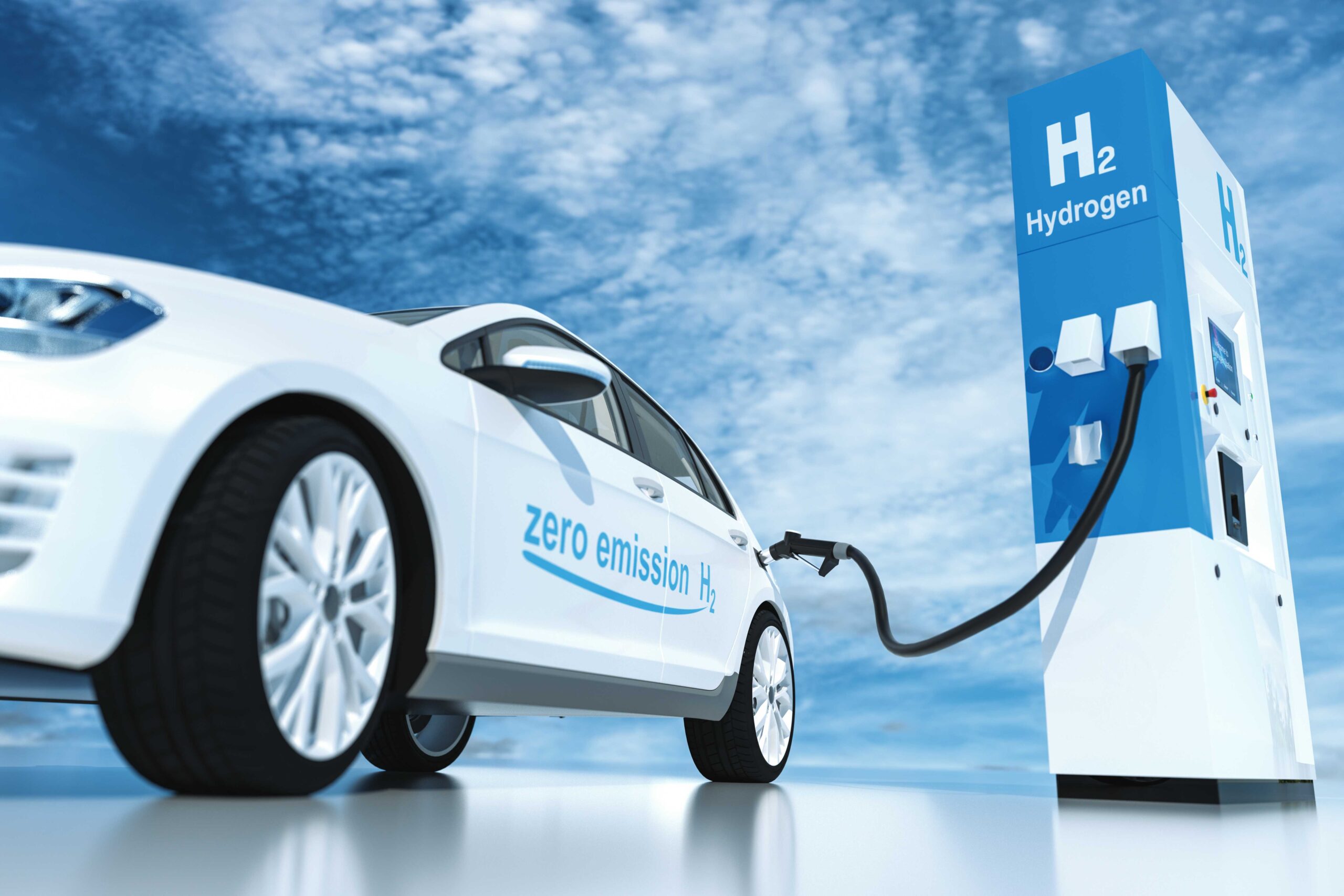
While the current buzzword in the automotive industry is electric vehicles or EVs, there is a greener option which has the potential to overrun our roads: hydrogen cars or FCEVs. However, multiple challenges need to be overcome before potential turns to reality.
The Fuel Cell Electric Vehicle or FCEV, is one that has its own efficient power plant or fuel cell on board which converts the hydrogen in the fuel tank into electricity. This means hydrogen vehicles produce the electricity themselves. They are unlike purely electric or hybrid vehicles, also known as Battery Electric Vehicles or BEVs, whose power comes from a built-in battery which is charged from an external power source.
In the fuel cell of an FCEV, hydrogen and oxygen generate electrical energy which is directed into the electric motor or the battery which acts as a temporary storage device. Fuel cells generate electricity through an electrochemical reaction known as reverse electrolysis. This reaction combines hydrogen and oxygen to form electricity, heat and water vapour. All three of the by-products of this reverse electrolysis reaction can be further utilized by the fuel cell system. The hydrogen comes from one or more tanks in the car while the oxygen comes from ambient air. The heat and water formed exits through the exhaust as water vapor with zero emissions.
The electricity generated in the fuel cell flows to the electric motor to drive the vehicle and/or charges a battery that acts as temporary storage until the energy is needed for the drive. This battery is far smaller than the one of a BEV, which means it is also lighter. It is also being constantly recharged by the fuel cell. A hydrogen car with tank capacity of five kgs of high-pressure compressed hydrogen, with average consumption rates, can deliver approximately 550 kilometres per full tank.
There are risks associated with hydrogen drives. Hydrogen is a highly flammable gas in the presence of oxygen and can cause fires and explosions if not properly controlled. To prevent mishaps during operation of a fuel cell car, the hydrogen in the vehicle is stored in gaseous form in thick-walled tanks which meet safety standards. Numerous crash tests have validated the safety of this design: the tanks were undamaged and no hydrogen leaked out. In all fairness, hydrogen technology is not new and has been tried and tested in road and rail vehicles, space rockets, forklifts, ships and aircraft, to name a few.
From an ecological perspective, FCEVs are environmentally friendly and sustainable as the exhaust air of a hydrogen car consists of pure water vapor. The fuel cell drive is therefore totally emission-free. This means it keeps the air in the cities clean. Whether it protects the climate depends on how the hydrogen was produced. Hydrogen production requires electrical energy. In the process of electrolysis, electrical energy breaks down water into its separate hydrogen and oxygen components. If the electricity used comes from renewable sources, hydrogen production has a neutral carbon footprint. If the source is fossil fuels, it will have an adverse impact on the climate footprint of a hydrogen car. However, hydrogen can be produced when there is an oversupply of electricity from renewable energy sources like wind or solar energy. It is also a by-product in some industrial processes and often treated as waste. Decarbonised hydrogen (known as blue hydrogen) can also be manufactured by natural gas through a process called steam reforming.
With so much going for it, why is the hydrogen car not yet seen on roads? Various challenges persist. Charging or refuelling stations are few and far between. This scarcity makes it difficult for customers to refuel their vehicles, limiting the convenience of owning a hydrogen fuel car. The cost of building and maintaining hydrogen refuelling stations is high and the uncertainty of FCEV cars becoming mainstream has deterred potential investors.
The high cost of production and storage of the gas is another challenge. Hydrogen is primarily obtained through electrolysis, which requires a significant amount of energy. Storage and transportation of hydrogen is also expensive, with complex engineering and materials involved in keeping it contained, for it can easily escape into the atmosphere complicating matters of safety during transportation.
Government policies and regulations supporting the promotion of hydrogen fuel cars by providing financial incentives, development of refuelling infrastructure and targets for reducing carbon emissions are key to the adoption of hydrogen fuel cars commercially. As the infrastructure expands, production costs decrease, and policies become more supportive, there is sure to be an increase in the number of hydrogen fuel cars on our roads. It will then be: Ready, Get-set, GO!
 TrafficInfraTech Magazine Linking People Places & Progress
TrafficInfraTech Magazine Linking People Places & Progress